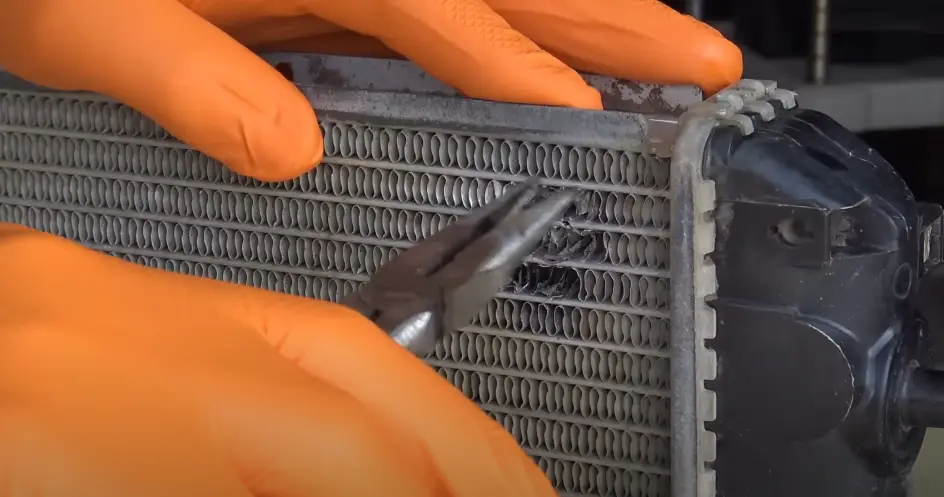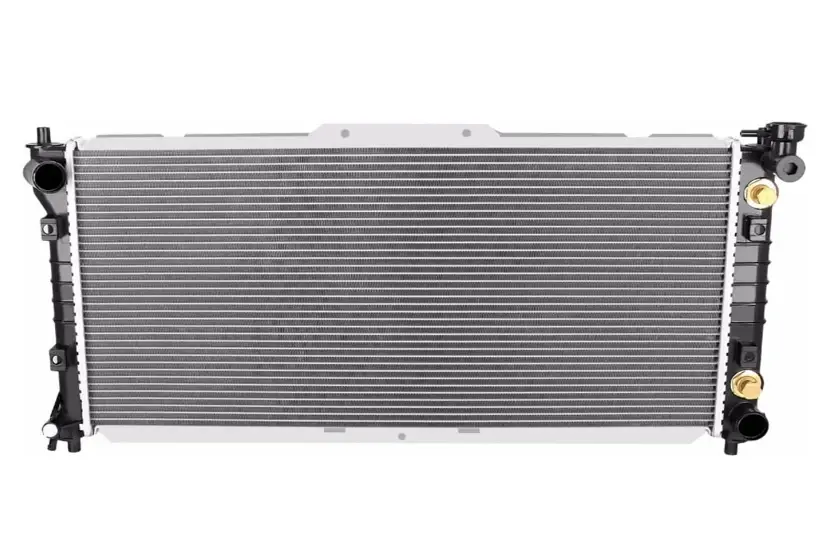Yes, a radiator can often be repaired, especially if the issue is a small leak, minor clog, or damaged radiator cap. Repairs like soldering, using sealants, or flushing the system can address these problems. However, extensive damage, severe corrosion, or multiple issues may require a full replacement for long-term reliability.
A radiator is a critical component of your vehicle’s cooling system, responsible for maintaining the engine’s temperature and preventing it from overheating. However, like all automotive parts, radiators can develop issues over time.
When faced with a malfunctioning radiator, the first question many car owners ask is: “Can a radiator be repaired?” The answer depends on the type and extent of the damage, as well as the specific circumstances surrounding the issue.
Contents
Common Radiator Problems
Before discussing whether a radiator can be repaired, it’s essential to understand the types of problems that can occur:
- Leaks: One of the most common issues with radiators is coolant leaks. Leaks can occur in several areas, including the radiator core, hoses, or connections. Over time, corrosion, wear and tear, or physical damage can cause small holes or cracks to form, leading to coolant loss.
- Clogs: Radiators can become clogged with debris, rust, or sediment, which can restrict the flow of coolant and reduce the radiator’s efficiency. This can cause the engine to overheat, potentially leading to more severe damage.
- Corrosion: Radiators are exposed to various elements, including moisture and road salts, which can cause corrosion over time. Corrosion weakens the radiator, making it more susceptible to leaks and other failures.
- Physical Damage: Radiators are vulnerable to physical damage from road debris, accidents, or improper handling. Dents, bent fins, or punctures can impair the radiator’s ability to cool the engine effectively.
- Faulty Radiator Cap: The radiator cap is responsible for maintaining the correct pressure in the cooling system. If the cap is damaged or worn out, it can lead to coolant leaks or reduced cooling efficiency.
Can a Radiator Be Repaired?
Whether a radiator can be repaired depends on the nature and extent of the damage. Here are the main scenarios in which a radiator can or cannot be repaired:
- Repairing Small Leaks
- Radiator Stop Leak Products: For small leaks, there are various radiator stop leak products available that can temporarily seal the leak. These products work by circulating through the cooling system and sealing small cracks or holes. However, they are generally considered a temporary fix and may not be effective for larger or more severe leaks.
- Soldering or Welding: If the leak is in a metal part of the radiator, such as the core or end tanks, it may be possible to repair it using soldering or welding. This involves heating the metal and applying a filler material to seal the crack or hole. Soldering is often used for small leaks in copper or brass radiators, while aluminum radiators may require specialized welding techniques.
- Repairing Clogs
- Flushing the Radiator: If the radiator is clogged, a thorough flush may be sufficient to remove the debris and restore proper coolant flow. Radiator flushing involves circulating a cleaning solution through the radiator to break up and remove any blockages. This is a relatively simple and cost-effective repair, but it may not be effective for severe clogs.
- Repairing Corrosion
- Patch Repairs: For minor corrosion, it may be possible to patch the affected area with a sealant or epoxy. However, if the corrosion is extensive, it may have weakened the radiator to the point where replacement is the better option. Corroded areas are prone to future leaks and failures, making patch repairs a temporary solution at best.
- Repairing Physical Damage
- Straightening Fins: If the radiator fins are bent or damaged, they can often be straightened using a fin comb or similar tool. This can improve airflow and cooling efficiency. However, if the damage is severe, such as a puncture or large dent, it may not be possible to repair the radiator effectively.
- Replacing the Radiator Cap
- Simple Replacement: If the radiator cap is the issue, it can be easily replaced with a new one. This is a straightforward and inexpensive repair that can restore proper pressure to the cooling system.

When to Replace Radiator
While some radiator issues can be repaired, there are situations where replacement is the more practical or cost-effective option:
- Extensive Leaks or Damage: If the radiator has multiple leaks, large cracks, or extensive damage, repairing it may not be feasible. In such cases, replacing the radiator is often the best option to ensure reliable cooling system performance.
- Severe Corrosion: Radiators that are heavily corroded are likely to fail again in the future, even after repairs. Replacing the radiator is usually more cost-effective in the long run.
- Repeated Problems: If the radiator has been repaired multiple times and continues to develop issues, it may be time to replace it. A new radiator will provide greater reliability and peace of mind.
- Age of the Radiator: If the radiator is old and has already been repaired several times, it may be nearing the end of its lifespan. In such cases, replacement is recommended to avoid further issues.
Cost Considerations
The cost of repairing a radiator varies depending on the type of repair needed and the make and model of your vehicle. Here’s a general breakdown:
- Radiator Stop Leak Products: $10 to $30
- Soldering or Welding: $50 to $150, depending on the extent of the repair and the material of the radiator.
- Radiator Flush: $50 to $100 for a professional flush, or $10 to $20 for a DIY flush kit.
- Radiator Cap Replacement: $10 to $30
- Radiator Replacement: $300 to $900, including parts and labor, with costs potentially higher for luxury or high-performance vehicles.
Frequently Asked Questions
Here are some FAQs about the radiator repairing –
- Can a plastic radiator be repaired?
- Plastic radiators can be repaired using specialized epoxy or plastic welding techniques. However, repairs are often temporary, and replacement may be a more reliable solution for long-term use.
- How do I know if my radiator can be repaired?
- A professional inspection can determine whether your radiator can be repaired. Factors such as the location and size of the leak, the extent of corrosion, and the overall condition of the radiator will influence the reparability.
- Is it worth repairing an old radiator?
- If the radiator is old and has experienced multiple issues, it may be more cost-effective to replace it rather than invest in repairs. New radiators offer greater reliability and efficiency.
- Can I drive with a leaking radiator?
- Driving with a leaking radiator is not recommended, as it can lead to engine overheating and serious damage. It’s best to address the leak as soon as possible to avoid further complications.
- How long does a radiator repair last?
- The longevity of a radiator repair depends on the type of repair and the condition of the radiator. Minor repairs, such as sealing small leaks, may last for several months to a few years, while more extensive repairs or replacements offer longer-term solutions.
Conclusion
Whether a radiator can be repaired depends on the nature of the problem and the condition of the radiator. While some issues, such as small leaks or minor physical damage, can be effectively repaired, more extensive damage or corrosion may necessitate a full replacement.
